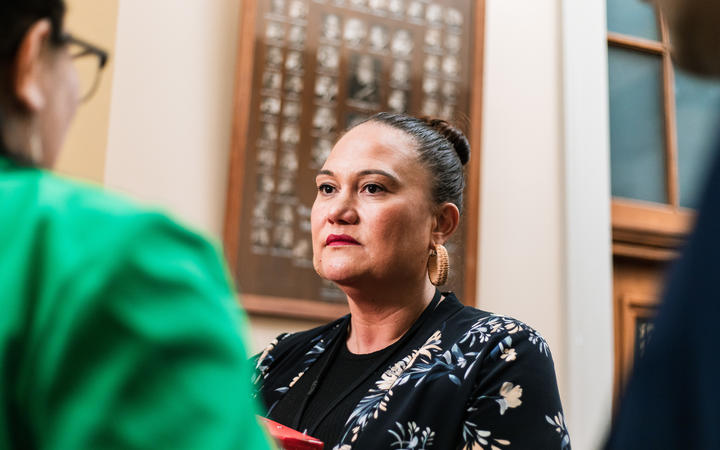The government’s Flexi-wage scheme is well off track if it wants to get 40,000 people off a benefit and into a job in two years, National says.
National’s Social Development Spokesperson Louise Upston.
Photo: RNZ / Samuel Rillstone
Revamping and expanding Flexi-wage was a key 2020 election promise for Labour, with Prime Minister Jacinda Ardern giving the policy pride of place at her campaign launch that August.
The scheme subsidises employers to hire workers, specifically people at risk of long-term unemployment and receiving a benefit.
“It is aimed at supporting real jobs that have a real chance of lasting. It’s an investment in our people, their future, and it’s about working together,” Ardern said at the time.
Numbers obtained through written questions to Social Development Minister Carmel Sepuloni however showed the policy was failing, National’s Spokesperson Louise Upston said.
“Labour haven’t delivered the jobs that they had promised. What that means is unfortunately there will be more people who are stuck on the unemployment benefit for longer,” Upston said.
Flexi-wage was expanded in February last year, aiming to support 40,000 New Zealanders over two years at a cost of $311 million, but a year later just 13,194 jobs had been supported.
Upston said if that trajectory continued it would support just 26,388 jobs by the February 2023 deadline, more than 13,000 short of the scheme’s target.
“It was about urgency. It was about an urgent Covid response, people losing their jobs who needed to be reconnected to jobs. If they haven’t delivered now I’d be very surprised if they are able to deliver the 40,000 jobs over the two-year period.”
She said the scheme was also failing to support long-term unemployed New Zealanders, with just 5 percent of those on the scheme having spent more than four years on a benefit.
Some 1230 people had also left the scheme early and gone back onto a benefit.
“It’s very disappointing. It means that people haven’t been connected to jobs they can stick in, and that’s the critical part,” Upston said.
Sepuloni however said it was falling short of the target because there were fewer people on benefits than expected, with Treasury forecasting about 487,500 beneficiaries during the pandemic.
“This did not happen, with March 2022 figures showing there are now 348,399 people receiving a main benefit,” the minister said.

Photo: RNZ / Samuel Rillstone
Some 1299 more people also accessed Flexi-wage in March, she said, the highest monthly jump since the scheme was expanded.
“We also saw a slowing in placements into Flexi-wage during the August 2021 response to Delta, but recent monthly numbers are back on track. New products such as the enhanced Flexi-wage always take some time to ramp up as more employers become aware of the subsidy,” she said.
Ministry of Social Development employment manager Hugh Miller said 40,000 was considered the upper limit of what was possible, rather than a target.
“We’ve seen the labour market bounce back stronger than expected from the initial impact of Covid-19 across many sectors, meaning Flexi-wage has not always been required to support people into work.”
Credit: Source link








